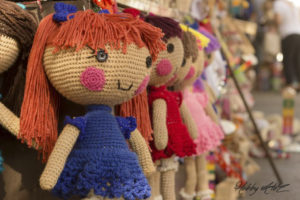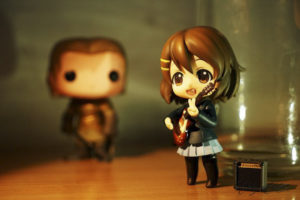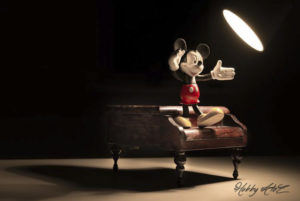Collecting dolls has become more popular in the last few decades than ever before. With access to the Internet allowing collectors to communicate with each other whenever they wish, it is easy for someone interested in collection to find exactly the right doll. For children, an early interest in collecting a specific type of doll can lead to a valuable collection that will increase in value for every year the child keeps that collection active.
A case in point is the Carolers’ Collection, developed in the late 1970s by Joyce and Bob Byers. The Carolers are made from plaster, Paper-Mache, wire, paint, and all kinds of fabric. As interest in collecting these figurines has increased, so too have the categories–from Traditional to Victorian, Christmas, Dickens, Musicians, Nativity, Children of the World, and several more. In addition, the value of the dolls continues to increase, making doll collecting a lucrative investment.
Other Doll Collecting Categories
America – Hopi Indian dolls and Pueblo Kachina dolls; Corn-husk dolls, cloth dolls
Mexico – Trouble dolls, Our Lady of Guadalupe dolls
Europe – Fashion dolls, “baby” dolls
Japan – Doll Festivals
Feast of the Girls – March 3 Hina Matsuri
Feast of the Boys – March 5 Tango-No-Sekku
China – dolls representing gods or demons, opera stars
Africa – gourd dolls given to new mothers, which are passed down to daughters.
Russia – Matryoshka Russian nesting dolls
America’s History of Dolls
In the 18th century, America began to come into its own as doll makers, especially after the Revolutionary War when America became an independent nation. While the dolls of Europe and Asia became more and more sophisticated, Americans followed the example of Native Americans and made their dolls from corn husks and rags. In a corn husk doll, the husk forms the head, limbs and clothes, with cornsilk for the hair. A rag doll named “Johnnie,” dated in the early nineteenth century, may have been modeled after a real boy. He is dressed in a blue challis suit band linens. His hair and features are embroidered in yarn. It wasn’t until 1865, after the Civil War, that the first American doll-manufacturing enterprise was developed. Then Charles Goodyear discovered a way to vulcanize rubber (make it stronger, odor-free, and resilient) with additives, heat, and pressure, and rubber dolls became popular. “Kewpie” dolls were invented by Rose O’Neil in the early years of 20th century. These dolls had round faces, big eyes, and pointed heads. America became a leading contender in the manufacture of dolls by the end of the First World War.
The Cabbage Patch Kids that became so popular in the early 1980s were originally called Little People and were created by Xavier Roberts in 1977. He started his business in an old medical clinic. His employees wore hospital gowns and the dolls were sewn by hand. One appeal of these soft, cuddly dolls is the fact that a child receives an adoption certificate and a name for each doll.
By the 1990s, toy companies were desperate to outsell each other, and the doll market followed the book market in trying to find the big sell–the doll that would be in the greatest demand. It was partly guesswork and partly marketing skills, and the “Tickle Me, Elmo” doll was the doll everyone wanted in 1996 because the supply didn’t meet demand, similar to the Cabbage Patch craze. This was a perfect example of the power of popular television when Rosie O’Donnell and Bryant Gumbel (co-host of “Today”) featured the doll in one of their shows, creating a demand for Elmo not previously seen in the toy business. In 1999, evangelist Jerry Falwell created a demand for the purple TinkyWinky Teletubby by stating that he was gay because he carried a purse.
The latest demand in 2007 appears to be Harry Potter dolls and accessories, with Tonner Dolls manufacturing a very realistic Harry Potter doll as a collector’s item, selling for $100-$120 initially, and with Mattel creating action figure Harry Potter dolls that appear to do magic. In both cases, the Harry Potter doll looks like the young actor who plays Potter in film, not the illustration of Potter in the books. Mattel’s Harry Potter is an action figure capable of levitating a ball and creating potions, but his smiling face is a little too stiff to be realistic. Also, the real Harry Potter doesn’t smile that often, does he?
Dolls will always be in demand, some more than others, and collecting dolls has always been a popular pastime. We can only hope that, in the future, dolls will once more be born of need, not greed.
Some Things You Need To Know About Dolls
 There is so much variety when it comes to dolls. There are dolls designed as toys. There are dolls that resemble comic book, movie, and cartoon characters. There are dolls that are designed as collectibles, as well as authentic antique dolls. Dolls have existed in some form throughout history and many people are still quite interested in them as collectibles and toys.
There is so much variety when it comes to dolls. There are dolls designed as toys. There are dolls that resemble comic book, movie, and cartoon characters. There are dolls that are designed as collectibles, as well as authentic antique dolls. Dolls have existed in some form throughout history and many people are still quite interested in them as collectibles and toys.
The First Dolls
 Dolls have existed since ancient times. They were not only used as children’s toys, but they also represented religious figures and served as a sort of icon. Back then they were made of materials such as wood, animal fur, and clay. However, no dolls have been found that date back from prehistoric times except for a fragment located in Babylon. However, dolls have been found in Egyptian, Greek, and Roman children’s graves.
Dolls have existed since ancient times. They were not only used as children’s toys, but they also represented religious figures and served as a sort of icon. Back then they were made of materials such as wood, animal fur, and clay. However, no dolls have been found that date back from prehistoric times except for a fragment located in Babylon. However, dolls have been found in Egyptian, Greek, and Roman children’s graves.
Dolls in Europe
 Some time in the 16th or 17th centuries, the Europeans began constructing simple dolls out of wood. By the 1800’s, the Europeans started to make them out of different materials such as paper mache and wax. This is the time that porcelain also came into the picture. Porcelain proved to be more durable than the other materials and many of those have survived.
Some time in the 16th or 17th centuries, the Europeans began constructing simple dolls out of wood. By the 1800’s, the Europeans started to make them out of different materials such as paper mache and wax. This is the time that porcelain also came into the picture. Porcelain proved to be more durable than the other materials and many of those have survived.
 Types of Modern Dolls
Types of Modern Dolls
Today, dolls are still being made of porcelain as well as other materials. You can find dolls that resemble cartoon and comic characters. Others are designed to showcase fashion styles. Others look like princesses. One trip to the toy aisle and you will find dolls that suit almost every taste.
The Barbie doll came on the market in the late 1950’s and Barbie’s popularity is still going strong. Originally designed as a doll for teenagers, there are now Barbie dolls for almost everything.
Dolls Today
Dolls are a popular collectible item. People have Barbie doll collections as well as those for porcelain dolls. Also, dolls have not lost popularity as a children’s plaything. Whatever you choose to do with your dolls, you can know they have certainly come a long way since ancient times.
Beginning a Doll Collection – A Guide For Beginners
Starting to collect dolls can be an overwhelming process. There are so many dolls available – with varying values – that it becomes hard for those new to doll collecting to know where to start. Instead of researching the different types of dolls available, focus on the common mistakes made by beginners.
 All too often, new collectors want to purchase an assortment of dolls and get the collection started as soon as possible. However, this may result in wasted time and money. It takes knowledge and experience to build a valuable doll collection, so refusing to cut corners is important.
All too often, new collectors want to purchase an assortment of dolls and get the collection started as soon as possible. However, this may result in wasted time and money. It takes knowledge and experience to build a valuable doll collection, so refusing to cut corners is important.
It is always helpful to seek the advice of seasoned collectors, who are a priceless source of information. Joining doll collecting clubs and getting in contact with other collectors will also make the process more fun. Finding a great buy or a rare collector’s item is an exciting event, one that should be shared with those who appreciate its true pleasure.
 Although collectible dolls can be purchased using many different methods, it is always nice to see, feel, and inspect a doll before making a commitment. Online auctions and Internet-based storefronts are filled with antique dolls, but be sure to ask questions, seek clarification, and request certification (if available) to ensure that the doll is not a replica.
Although collectible dolls can be purchased using many different methods, it is always nice to see, feel, and inspect a doll before making a commitment. Online auctions and Internet-based storefronts are filled with antique dolls, but be sure to ask questions, seek clarification, and request certification (if available) to ensure that the doll is not a replica.
Maintaining a doll collection can become quite expensive, so it is necessary to use good judgment when starting out. Purchasing a few inexpensive dolls is a great way to get going because they can always be replaced with more valuable dolls later. Keep in mind, however, that saving the money otherwise intended for a few cheap dolls would allow for the purchase of a more costly doll.
As the collection begins to grow, most collectors find a few lines more appealing than others; sticking to just a few different kinds of dolls will make it easier to add to the collection. Letting a doll collection expand to the point where it begins to take over all unused space will not only prevent the owner from enjoying the collection to its fullest, but might also cause a decrease in the enjoyment of future purchases.
Allot a certain amount of space for dolls early in the process and stick to it. Buy dolls that contain a significant amount of appeal and pass on any that you do not feel strongly about. It doesn’t take long to create an admirable collection filled with treasures that best reflect the style and interests of the owner.





